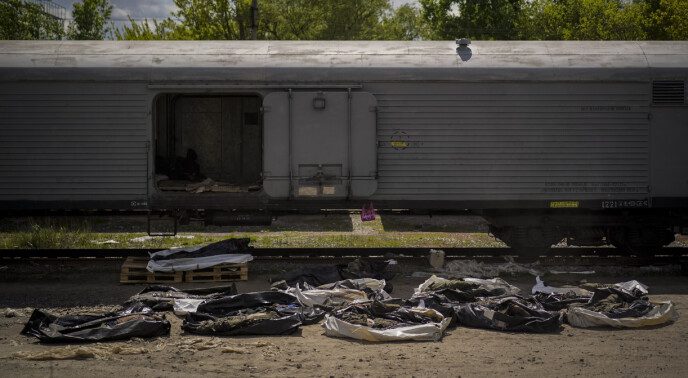Throughout the war in Ukraine, there were pictures of dead soldiers left behind when the fronts moved.
No one knows how many have actually died in the war.
There’s a lot we don’t know about, says Professor Joe Jacobsen from NTNU to Dagbladet. Jacobsen is an expert in international politics.
– Among the things we don’t know is the actual number of Russian soldiers who have fallen. Jacobsen says the Russians mention roughly 6,000 countries, Ukraine mentions about 50,000, and the United States says something in between.

Did Putin fool us?
He explains that as part of the Geneva Convention, i.e. the rules of international warfare, dead soldiers must be identified as much as possible before they are buried or cremated.
– Chaos
He also says that people usually go to great lengths to bring in fellow fallen soldiers with them, but this is not always possible.
– Especially when you withdraw, you do not always have the time and opportunity to take the dead soldiers with you. It’s going fast. They are ignored, Jacobsen says, often out of sheer necessity.
Recently, a number of dead Russian soldiers were again found in the areas that the Ukrainian army had wrested from the Russians. Recently, a number of videos were posted on social media, including Telegram, in which hungry livestock, such as pigs, dogs and cats, began to eat fallen soldiers.
– Part of this relates to war, withdrawal, and chaos. The other end has the Russian system. In the eyes of the regime, Jacobsen says, the soldiers are there to serve Russia.
– cannon fodder
The Russians are used to such problems. He says that the soldiers were sent partly as cannon fodder and partly to serve the state.

The dead: a group of dead Russian soldiers lie in front of them as Ukrainian investigators try to identify them. Photo: Bernat Armangue/AP/NTB
Show more
The professor believes that the vast majority of Russians who die in Ukraine will remain in Ukraine.
If they die, they will die, without doing much about it. Russia has a terrible history in this matter, for example during the Second World War. Then there were the millions of soldiers, and civilians to that extent, who were never found again, he says.
– It also concerns the fact that you are not necessarily interested in showing thousands of corpses at home in Russia, the professor believes.

Exposed bomb trick
The moment the Russians bring home several thousand dead soldiers, one has to admit that the casualty figures are much higher than they previously claimed.
Basically, I don’t think the system cares about people at all. It fits historical Russia. From their point of view, they are there for one purpose, which is to fight. It’s not a disaster for Russia to see dead soldiers, Jacobsen says.
The dead are used as weapons

Steel snaps: – Strongest blow
He compares the relationship between the Norwegian public and the Norwegian soldiers who fell in Afghanistan. Then there were media reports and every death got a lot of attention. Jacobsen believes that this will never happen in Russia.
In war, human dignity is always the first victim. War is cruel and the way you behave in war, especially long-running wars, is getting worse, he says.
One thing in particular
– Many of the corpses they left behind were connected to explosives, so-called booby traps. It is very hideous and suggests that there is something different about how individuals are viewed by using partially dead soldiers as weapons, Jacobsen concludes.

“Organizer. Social media geek. General communicator. Bacon scholar. Proud pop culture trailblazer.”

